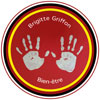Self-Care Workshop
Body Energy Stimulation Workshop
Do-In, Chinese Self-Massage, Self-Shiatsu and Makko‑Ho (meridian stretching).
The exercise program is based on principles of traditional Chinese medicine and seeks to bring an individual’s energy flows into equilibrium with natural cycles (based on the Chinese seasons).
The movements I teach are performed on themselves by people wearing comfortable garments, while sitting, lying or standing on a floor mat.
This workshop helps participants become proactive and autonomous in improving their wellbeing or in easily resuming a physical activity.
Activities are performed in a non-competitive manner.
1. Do-In
Do-In is a set of bodily practices involving specific manual techniques based on traditional Chinese massage. “Anma” means “calm with the hands.” Among the many translations of the Japanese term Do-In is “energy pathway.”
Using different motions (pressure, stretching, traction, flexion, extension, etc.), the practitioner stimulates Chi (energy) which flows through your body around the meridians.
Do-In is performed on the legs, arms, back, torso and head.
Benefits of Do-In :
- Energy : Regulates energy in the meridians.
- Physical : Promotes deep-rootedness and balance, while relieving muscular tension.
- Psychological : Calms, builds self-confidence and promotes greater self-esteem.
Do-In in Pictures
2. Self-Shiatsu
Self-Shiatsu is administered with the fingers (tips of the middle and index fingers on top of each other and the three central fingers bunched together), with the palms and elbows on the body as a whole.
Pressure exerted on specific points along with meridians is synchronized with the practitioner’s breathing (inhalation/exhalation).
Self-Shiatsu is performed on the legs, arms, back, torso and head.
Benefits of Self-Shiatsu :
- Energy : Harmonizes the body’s entire energy system.
- Physical : Tonifies the body.
- Psychological : Enhances cognitive performance (memory, attention, concentration), improves working and learning abilities.
Self-Shiatsu in Pictures
3. Chinese Self-Massage
Chinese Self-Massage helps put you back in touch with your body. It involves movements of the hands, fists and palms.
Different kinds of techniques are performed on the body, including pressing, pulling, tightening, rubbing, vibrating, pushing, softening, kneading and tapping along the meridians.
Chinese Self-Massage is performed on the legs, arms, back, torso and head.
Benefits de Chinese Self-Massage :
- Energy : Tonifies body and boosts vital energy.
- Physical : Builds overall motor abilities (balance, coordination).
- Psychological : Provides a positive outlook on life, increases resistance to stress and reduces anxiety.
Chinese Self-Massage in Pictures
4. Makko-Ho: Stretching the Body’s Key Meridians
Shizuto Massunaga, founder of Zen Shiatsu therapy, popularized Makko-Ho practices, based on Keiratu Taiso’s gym exercises.
This set of motions and slow stretching is performed according to the biological clock of traditional Chinese medicine.
Makko-Ho is designed to gently stretch each one of the six pairs of meridians in turn, according to a dedicated motion.
Benefits of Makko-Ho :
- Energy : Balances the body’s vital energy and promotes the sensation of Chi flowing in each of the meridians in question.
- Physical : Increases flexibility.
- Psychological : Improves mental acuity (decision-making, memory, planning and concentration).
Makko-Ho in Pictures
All of the Previously Described Body Energy Stimulation Workshop Exercises are for:
Children and adults. Children must be accompanied by a parent. The practice is tuned to the needs of each student. No prerequisites for participating in the workshop.
Information :
Individuals or group sessions.
For individuals: at home or at a site selected and arranged by the participant.
For groups: see details
Time : four-hour, half-day session. Fee: €75 per person for the half day.
Logistics/Organization : bring a floor mat. Wear loose and comfortable clothing.




















